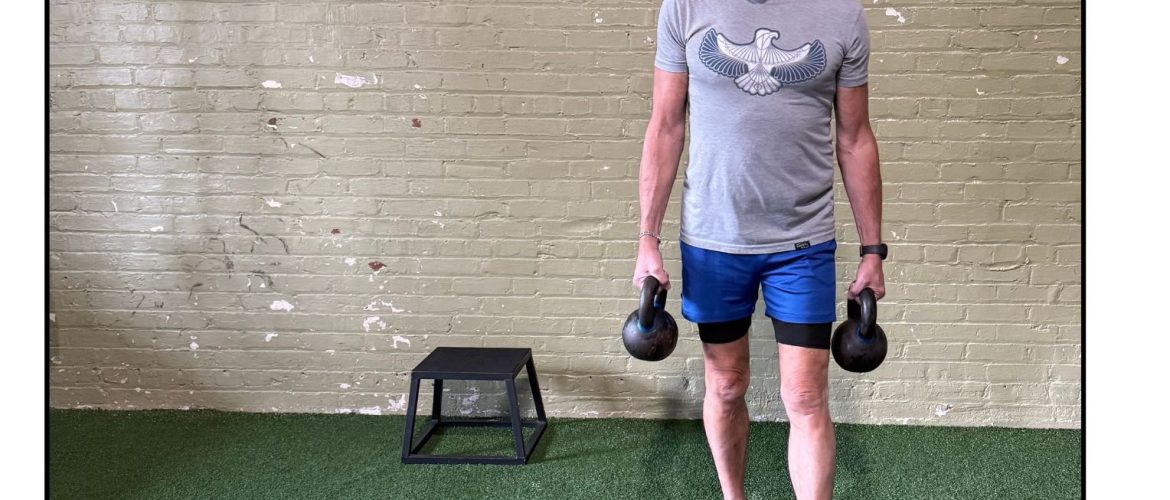 Have you ever wondered what practical use your workouts have in daily life?
Have you ever wondered what practical use your workouts have in daily life?
You’re not alone.
Plenty of us look at someone doing bicep curls or bench presses and think, Why would I want to do that?
That’s where functional fitness comes in. This kind of training focuses on movements that mirror the tasks you do every day — things like standing up from a chair, carrying groceries, bending to pick something up, or climbing stairs.
It’s not about chasing youth or a certain look. It’s about moving well, feeling steady, and keeping the strength and confidence to live life on your own terms.
One of the best examples is the farmer’s carry. You’ve probably done it without realizing it — hauling grocery bags from the car, carrying luggage through the airport, or moving boxes around the house. The exercise version simply adds structure and intention.
Hold a weight (like a dumbbell or kettlebell) in each hand or just one at a time, stand tall, engage your core, and walk a short distance with control. It strengthens your grip, shoulders, and core, all in one move. And those benefits show up every time you tackle daily chores or play with your grandkids.
These functional exercises use all three planes of movement: front to back, side to side, and rotational.
Just like life!
Lots of Function
Other examples of functional exercises include:
- Squats – strengthen your legs and hips for sitting, standing, and climbing stairs.
- Lunges – improve balance and mobility for walking or getting up from the floor.
- Step-ups – mimic everyday movements like stepping onto a curb or into a car.
- Push-ups or rows – build upper-body strength for pushing, pulling, or lifting.
- Planks – reinforce your core to support posture and protect your back.
Together, these exercises train your body as one coordinated unit, the way it’s meant to work. Over time, that means fewer injuries, better balance, and more confidence to stay active for as long as possible.
You’re not just building muscle; you’re investing in longevity and quality of life.
Three Keys to Training Smarter
Functional fitness isn’t just about which exercises you do. It’s also about how you do them. A smart approach focuses on strength, recovery, and form.
- Prioritize Strength
Muscle and bone naturally decline with age, but resistance training helps maintain and even rebuild both. It’s the best way to keep your body capable, your metabolism healthy, and your confidence high. It helps you sleep better, too. - Don’t Skip Recovery
Rest days are when your body adapts and grows stronger. So, be sure to include stretching, mobility, and good sleep in your weekly routine to support progress and prevent injuries. When you’re not strength training, ride a bike or toss a football. - Focus on Form
Quality beats quantity every time. Controlled, deliberate movement delivers better results. It improves posture. And it’s the way to stay safe and efficient, rather than pushing too hard or rushing.
Functional fitness connects the dots between your workouts and your daily life, helping you stay strong, steady, and ready for whatever comes next.
Let’s make it happen for you together!
Holly Kouvo is a personal trainer, functional aging specialist, senior fitness specialist, brain health trainer, writer, and speaker.

